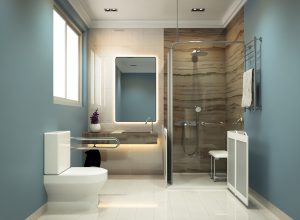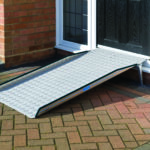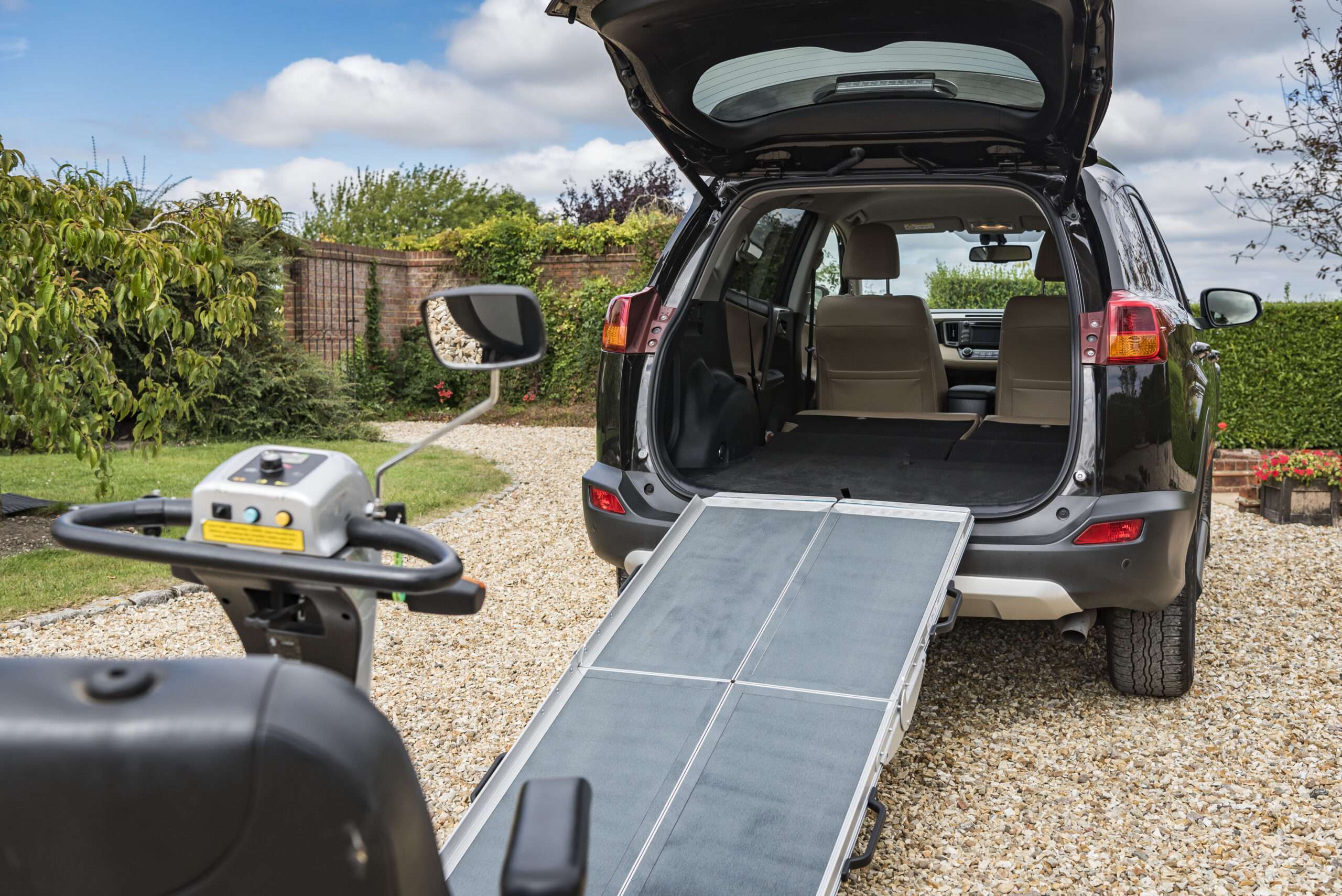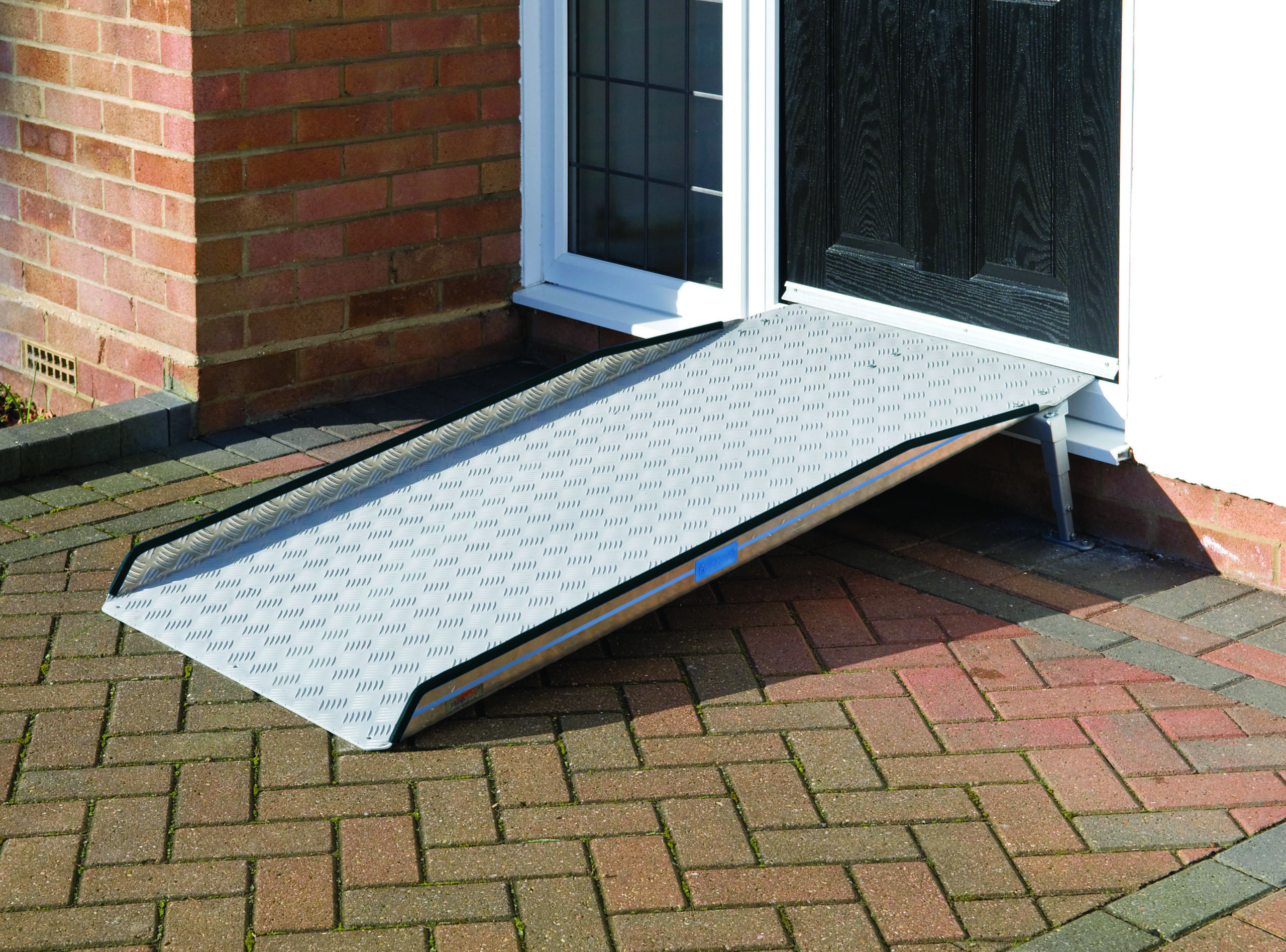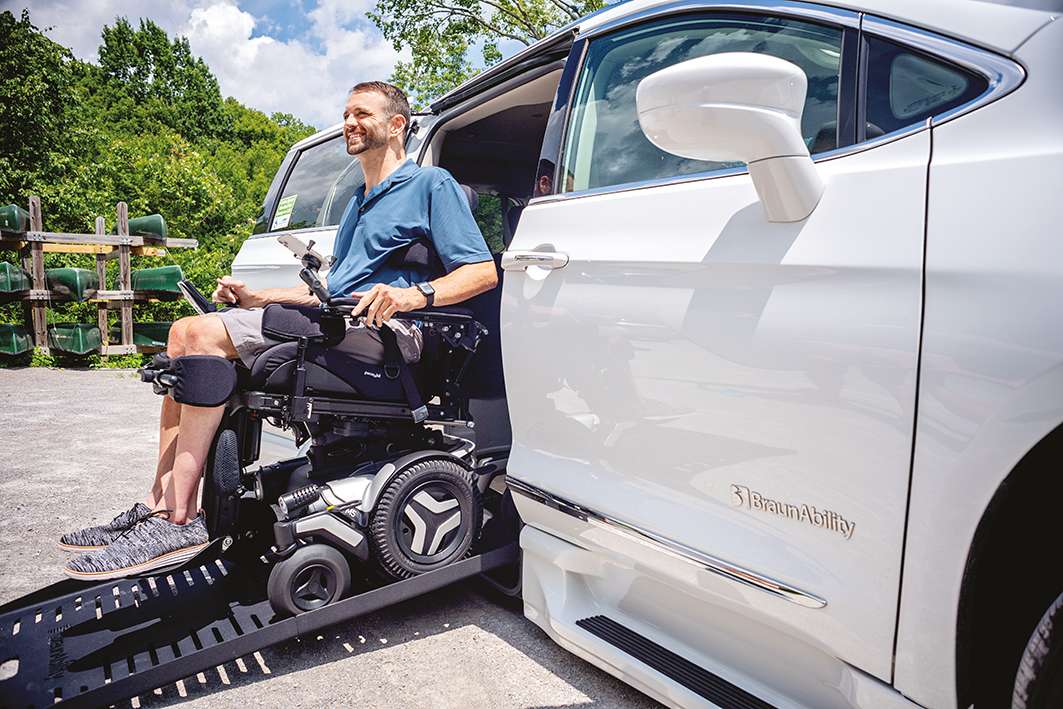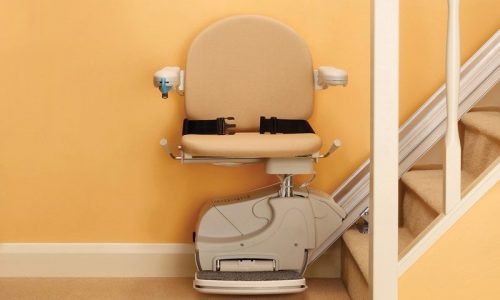Getting in and out of vehicles shouldn’t be a barrier to independence. Whether you’re a wheelchair user, mobility scooter owner, or carer looking for practical solutions, choosing the right vehicle ramp can transform daily journeys from challenging ordeals into smooth, dignified experiences.
With the wheelchair accessible vehicle market reaching £4.8 billion in 2024 and projected to grow to £8.4 billion by 2033, there’s never been more choice, or more need for clear, practical guidance on what actually matters when selecting a ramp for your vehicle.
Jump straight to…
Understanding Your Vehicle Access Options
The Reality of Vehicle Loading
Lifting a wheelchair or mobility scooter into a vehicle without assistance is extremely difficult. In fact, it’s often impossible. Modern powered wheelchairs can weigh 120-180kg before adding the user’s weight. Even lightweight manual chairs present significant lifting challenges, particularly for carers managing this task multiple times daily.
This is where vehicle access ramps become essential. They’re fundamental tools that enable independence, protect carers from injury, and ensure dignity in transportation.
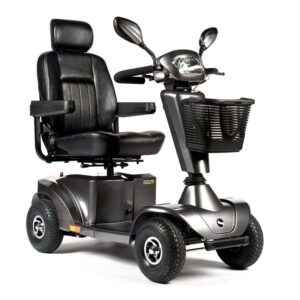
Folding Ramps: The Versatile Choice
Folding ramps have become the go-to solution for many users. These ramps split into two or more sections that fold together, creating a compact unit that stores easily in your boot. When needed, they unfold to create a stable platform for wheelchair or scooter access.
The Aerolight Lifestyle range exemplifies modern folding ramp design. Despite splitting into two sections for storage, it provides a full-width platform that’s ideal for mobility scooters where wheels don’t always align perfectly. The ability to fold means you can store it in most vehicle boots without sacrificing passenger or luggage space. Contrasting edge strips enhance visibility in low light, a crucial safety feature for winter mornings or evening use.
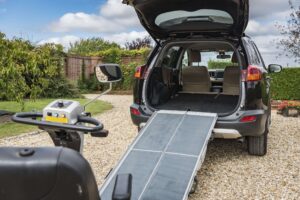
Telescopic Ramps: Maximum Portability
For those prioritising compact storage and versatility, telescopic ramps offer remarkable engineering. The Ultralight Telescopic range, available in 2 or 3 section versions, extends to nearly 3 metres whilst collapsing down to boot-friendly dimensions.
These channel-style ramps consist of two parallel tracks rather than a single platform. While perfect for wheelchairs with their predictable wheel spacing, they’re less suitable for mobility scooters where wheel positions vary between models. The channel design provides secure wheelchair guidance, preventing lateral movement during use. If you’re a scooter user, the full-width Aerolight Lifestyle provides a better solution.
NB: Telescopic ramps don’t have handrails and are only suitable for personal use, not commercial or public settings.
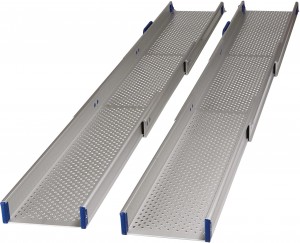
Fold-Out Tailboard Ramps: The Professional Solution
For dedicated wheelchair accessible vehicles, fold-out tailboard ramps offer the optimum solution. These two or three-part units hinge from the rear or side door, often providing the shallowest angle possible, critical for independent use. Modern designs feature:
- Spring-assisted or gas-strut operation for effortless deployment
- Capacities from 400kg to 600kg for commercial variants
- Transition plates that smooth the critical junction between ramp and vehicle
- Kerb rails preventing wheels from wandering off edges.
Understanding Gradient Requirements
Gradient guidelines are designed to make the difference between safe, independent access and dangerous, exhausting struggles. The UK’s Approved Document M provides clear guidance:
| Rise (mm) | Length at 1:12 | Length at 1:15 | Length at 1:20 |
| 150 | 1.80m | 2.25m | 3.00m |
| 300 | 3.60m | 4.50m | 6.00m |
| 400 | 4.80m | 6.00m | 8.00m |
| 480 | 5.76m | 7.20m | 9.60m |
How to use this table:
- For ramps up to 2m long: 1:12 maximum gradient
- Between 2m and 5m: aim for 1:15
- Over 5m: target 1:20 for optimal safety
These ratios mean that for every unit of vertical rise, you need 12, 15, or 20 units of horizontal length respectively. A 480mm rise (typical van height) at the ideal 1:12 ratio requires 5.76m of ramp, clearly impractical for most situations, which is why vehicle conversions often include floor-lowering or accept steeper gradients with assistance.
Weight Capacity: Getting It Right
Standard vehicle ramps typically support 300-400kg, while commercial options can offer up to 600Kg capacity, but to be certain you are getting the correct equipment we strongly recommend you calculate your actual requirements:
- Wheelchair weight: Manual chairs (15-25kg), powered chairs (120-180kg).
- User weight: Your actual weight.
- Accessories: Oxygen tanks, bags, equipment.
- Safety margin: Always allow 20% extra capacity.
Critical Safety Features You Can’t Compromise On
Surface and Edge Protection
High-grip surfaces are essential safety features. Look for perforated or heavily textured surfaces that maintain grip even when wet. Quality ramps feature:
- Kerb rails of at least 50mm height to prevent wheels wandering off edges.
- Contrasting edge strips for visibility in low light.
- Drainage channels preventing water accumulation.
- Non-slip coatings tested to relevant standards.
Transition Plates
The junction between ramp and vehicle can create a problematic lip that catches small front castors or causes jarring transitions. Quality ramps include transition plates that smooth this critical point.
Certification and Compliance:
Every vehicle ramp sold in the UK must meet BS 6109 standards, but leading manufacturers exceed these minimums:
- ISO 10542-1 compliance for wheelchair tie-down systems.
- WC19 certification if your wheelchair will be used as a vehicle seat.
- Proof load testing to 200% of stated capacity.
- CE marking confirming European safety standards.
- TÜV Rheinland certification from premium manufacturers.
The ramp gets you in, but wheelchair tie-down systems keep you safe during the journey. Dynamic crash tests simulate a 48km/h frontal impact, and documentation should be available to confirm compliance.
Aquadapt: Your Complete Accessibility Partner
As part of the CoreCare family, Aquadapt brings 35 years of accessibility expertise to vehicle access solutions. What sets us apart is our comprehensive approach; we provide complete mobility solutions tailored to your lifestyle.
Our vehicle ramp range includes:
For Wheelchairs:
- Ultralight Telescopic Ramps: Available in 2 or 3 section configurations, extending to nearly 3 metres whilst remaining light enough for solo handling. Perfect for non-converted cars or occasional use, these channel ramps provide secure wheelchair guidance whilst folding to compact dimensions for boot storage.
For Mobility Scooters:
- Aerolight Lifestyle Ramps: Full-width design accommodates varying scooter wheel positions. Splits into two sections that fold for storage yet provides the stable platform scooter users need. The continuous deck suits three-wheel and four-wheel scooters equally well.
Practical Considerations for Non-Adapted Vehicles
The Headroom Challenge
Standard vehicles weren’t designed for wheelchair access, creating specific challenges which need to be understood:
- Limited interior height may prevent sitting upright in a wheelchair.
- Door height restrictions affect ramp angle and length choices.
- Boot lips create additional obstacles requiring longer ramps.
While portable ramps and non-adapted vehicles provide valuable temporary solutions, daily users may find dedicated wheelchair accessible vehicles more practical long-term.
Storage Solutions
Both Ultralight and Aerolight ranges prioritise compact storage:
- Boot storage: Most ramps fit standard car boots when folded.
- Under-seat options: Some compact models store beneath vehicle seats.
- Secure fastening: Essential to prevent ramp movement during travel.
Never leave ramps unsecured, they can become dangerous projectiles during sudden stops.
Making Your Decision
Portable vs Permanent: Quick Comparison
Choose Portable Ramps (Aquadapt Ultralight/Aerolight) if:
- You need occasional vehicle access.
- Multiple vehicles will be used.
- Budget is limited (£150-£2,000).
- You’re not ready for vehicle conversion.
- You need flexibility for different locations.
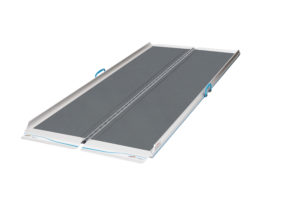
Choose Permanent Fold-Out/In-Floor Ramps if:
- Daily vehicle access is required.
- You need the shallowest possible gradient.
- Independence without assistance is priority.
- You want integrated WTORS for safety.
- Budget allows (£15,000-£40,000 for conversions).
For Wheelchair Users Specifically
Ultralight Telescopic suits you if:
- Your wheelchair has standard wheel spacing.
- Maximum portability is essential.
- You’ll have assistance available.
- Storage space is limited.
Avoid telescopic ramps if:
- You need handrails for stability.
- Commercial/public use is intended.
- Your wheelchair has non-standard dimensions.
For Mobility Scooter Users Specifically
Aerolight Lifestyle is ideal if:
- Your scooter has three wheels or non-standard spacing.
- You need a stable, wide platform.
- Visibility in low light matters.
Consider alternatives if:
- Weight is a major concern (telescopic are lighter but unsuitable).
- Storage space is minimal.
Investment and Value Considerations
Understanding the Full Cost Scenarios
Portable Solutions:
- Basic folding ramps: £150-£600.
- Professional telescopic (Ultralight): £800-£2,000.
- Heavy-duty commercial portable: £2,000-£5,000.
Vehicle Conversions:
- Rear-entry manual: £15,000-£25,000.
- Side-entry powered: £25,000-£40,000.
- New WAVs with factory conversions: £45,000-£80,000.
Remember: portable ramps offer immediate solutions at a fraction of conversion costs, but with limitations on gradient, weather resilience, and user independence.
Frequently Asked Questions
What gradient is safe for independent wheelchair use with a vehicle ramp?
The recommended gradient is 1:12 (8.33% incline) for independent use. This means for every inch of vertical rise, you need 12 inches of ramp length. Steeper gradients up to 1:8 are possible with assistance but require significantly more effort. Most vehicle applications work at slightly steeper angles than ideal due to space constraints.
What’s the weight capacity of standard vehicle ramps?
Most vehicle ramps support 300-400kg, accommodating the combined weight of user and wheelchair. The Ultralight and Aerolight ranges handle up to 400kg per pair. Commercial options reach 600kg, while some specialist ramps handle 1,000kg. Always calculate total weight including wheelchair, user, and equipment, then add 20% safety margin.
Can telescopic ramps be used with mobility scooters?
No, telescopic channel ramps like the Ultralight aren’t suitable for mobility scooters. Scooter wheels rarely align with the channels due to varying configurations between three and four-wheeled models. For scooters, choose full-width ramps like the Aerolight Lifestyle that provide a continuous platform accommodating any wheel position.
How do folding ramps differ from telescopic ramps?
Folding ramps like the Aerolight split into hinged sections creating a full-width platform, ideal for scooters and maximum stability. Telescopic ramps like the Ultralight extend with two parallel channels, offering more compact storage but only suiting wheelchairs with standard wheel spacing. Both can be stored easily but serve different mobility aids.
What’s the maximum safe height for portable vehicle ramps?
Most portable ramps work effectively up to 600mm rise. Beyond this, the required ramp length (7.2m at 1:12 gradient) becomes impractical. The Ultralight extends to nearly 3m, suitable for rises up to 250mm independently or 375mm with assistance. For higher vehicles, consider professional conversion with floor-lowering.
Do vehicle ramps work in wet weather?
Quality ramps feature anti-slip surfaces designed for wet conditions. Both Ultralight and Aerolight ranges maintain grip when wet through textured surfaces. However, exercise extra caution in rain or snow, consider using a gentler gradient than usual and ensure someone assists if conditions are particularly poor.
How should portable ramps be stored in vehicles?
Secure storage prevents damage and dangerous movement. Most folding and telescopic ramps fit in boots, the Ultralight’s compact design even fits under some seats. Always use storage bags or cases and secure with cargo straps. Never leave ramps loose where they could become projectiles during sudden stops.
What certification should I look for when buying a vehicle ramp?
Essential certifications include BS 6109 (British Standard for wheelchair ramps), CE marking (European safety), and proof load testing certificates. For complete vehicle systems, look for ISO 10542-1 compliance for wheelchair tie-downs. Reputable manufacturers exceed basic requirements with TÜV Rheinland or similar third-party certification.
Can I get funding help for vehicle ramps?
Yes, multiple funding routes exist. VAT exemption saves 20% for qualifying disabled users. The Motability Scheme may cover ramps within vehicle adaptations. Local authorities provide grants through occupational therapy assessments. Charitable organisations like the Family Fund assist eligible families. Some insurance policies cover medically necessary mobility equipment.



